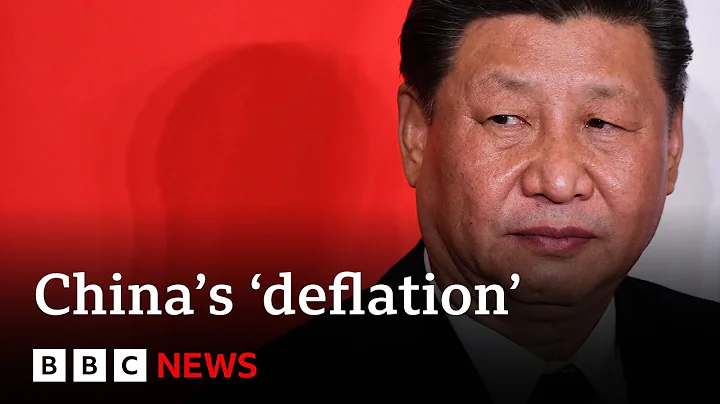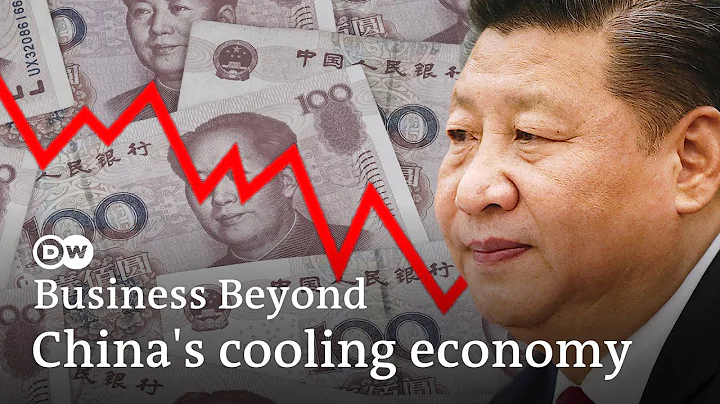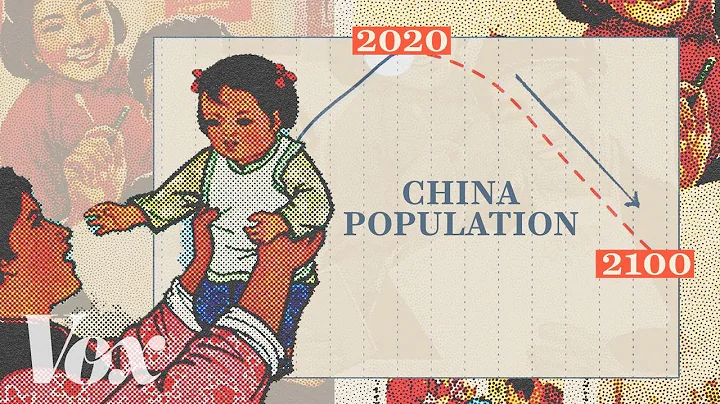
Since the mid-to-late 1950s, a large-scale wave of decolonization has swept across Africa. Most African countries have gained independence one after another through independence wars, peace agreements, referendums, etc.
By 1975, a total of 51 African countries had separated from European colonial powers and established independent countries.

▲Africa’s “decolonization” process diagram
However, there is a region in the northwest corner of Africa that has never succeeded in establishing an independent country. This area is the original Spanish colony Western Sahara . It is incompatible with the surrounding independent countries (Morocco became independent in 1956, Mauritania became independent in 1969, and Algeria became independent in 1962).

▲ Western Sahara can only be regarded as a region at present, not a country
In 1976, Spain, which had not withdrawn from Western Sahara for a long time, decided to fully withdraw its troops, but this time it did not follow the same script as the independence of neighboring countries. It has been slow to follow in the footsteps of its neighbors and gain independence.
Although the People's Front for the Liberation of Western Sahara (also known as the Front for the Liberation of Western Sahara) locally announced the establishment of the "Sahrawi Arab Democratic Republic".
However, several neighboring Morocco and Mauritania which had become independent early quickly marched into Western Sahara and started armed conflicts with the Western Sahara Front. They did not allow Western Sahara to become independent, and the Western Sahara War broke out.
Mauritania withdrew from the Western Sahara War four years after the war started due to unfavorable conditions. The southern area of Western Sahara it originally occupied was occupied by Morocco.
By 1987, Morocco controlled 80% of Western Sahara, and PFLP ruled approximately 20% of the eastern part.

▲ Morocco (blue) and PFLP (green) occupy areas
As of 2019, 53 United Nations member states (including Algeria, Mauritania) recognize the Sahrawi Arab Democratic Republic, while Spain and the United Nations Permanent Council countries (the United States and France) support Morocco’s occupation of Western Sahara.
So, why did Western Sahara fail to catch up with the "independence trend" and successfully establish a nation, but was instead invaded by neighboring countries?
1. The historical origins of Morocco
Looking at the map of Africa alone, modern Morocco is now an inconspicuous small country located in a corner of northwest Africa, with an area of only 450,000 square kilometers.

▲The northwest corner of Africa
But from the perspective of Eurasia, Morocco has a unique geographical location. It is located in the northwest of the African continent and the southern coast of the Mediterranean Sea, guarding the Strait of Gibraltar, the gateway from the Mediterranean Sea to the Atlantic Ocean.

▲ Morocco guards the Strait of Gibraltar
Although the Sahara Desert located in northern Africa is one of the least suitable places for survival on the earth, and the climate conditions are very harsh, the Atlas Mountains (the highest peak) of Morocco slant across the entire territory. (4167 meters above sea level) blocks the invasion of desert heat waves.
The coastal areas of Morocco have a Mediterranean climate, which is suitable for population breeding and development and enjoys the reputation of "North African Garden".

▲ Morocco topographic map
Therefore, since the 7th century, successive Moroccan dynasties have started here (including Al-Murabit dynasty , Almohad dynasty and Marin dynasty ).
The Moroccans (a mixed ethnic group of Arabs and Berbers ) fought in the north and south, and even crossed the Strait of Gibraltar to the north, invading the Christian world of Europe for two centuries, making Europeans frightened. At its largest territory, it once included northwest Africa and the Iberian Peninsula.

▲The largest territory of the Al-Murabit dynasty in 1076 (red)
Although the Moroccan dynasty included the western part of the Sahara Desert within its sphere of influence, it was located in the southern part of the Atlas Mountains and had a tropical desert climate. Due to the harsh climate and scarce rainfall, which was not suitable for survival, this area was only regarded as a marginal area by the Moroccans at the time.
Morocco’s historical control of the Mediterranean to Atlantic coasts of northwest Africa laid the foundation for the contemporary concept of Greater Morocco, and also foreshadowed the territorial disputes between Morocco and Western Sahara, Algeria and France.

▲The territory of the Greater Morocco concept
2. The arrival of colonists
Since the southern part of the Iberian Peninsula was occupied by Islamic forces in the 7th century (including the occupation of the Moroccan dynasty for nearly two centuries), Christian countries have been trying to restore the territory.

▲Reconquista, orange is the Islamic regime
In the process of fighting the Islamic forces to the south, The Portuguese Kingdom was established in 1139 and reached the southern coast in 1249, taking the lead in completing expansion and unification. Since then, the national borders have almost no longer been Changes occur.
And the Spanish Kingdom was established in 1469. After more than 700 years of reconquest movement, it finally perished in 1492 the Emirate of Granada , marking the end of the last Islamic regime on the peninsula.
▲The time node of the Reconquista

In the 15th century, when the Reconquista was coming to an end, Portugal and Spain began to expand southward and westward across the Strait of Gibraltar, establishing strong outposts on the Atlantic coast of Morocco as trade ports.
As a commercial town and important military location guarding the south coast of Gibraltar, Ceuta became its territory after it was occupied by Portugal in 1415.
In 1580, after the succession crisis in Portugal, Spain and Portugal merged (disintegrated in 1640), Ceuta accepted the rule of Spanish King Philip II with Portugal, and was officially ceded to Spain in 1668. Melilla, another important Mediterranean town, was also included in Spain's sphere of influence in 1494.

▲Portugal establishes stronghold in Morocco
Until the early 19th century, European colonial power was mainly limited to establishing trading stations in the coastal areas of Africa and establishing connections with local trading networks.
Early European colonists only established strongholds on the Atlantic and Mediterranean coasts of Morocco with suitable climates to conduct commercial trade and fishing activities, and did not deeply affect the desert hinterland of Morocco.
Although it did not successfully resist the Italian colonial forces and maintain independence from beginning to end like Ethiopia, before the 19th century, Morocco under the rule of the Alawi dynasty was one of the few that could resist the invasion of European colonists and successfully One of the African countries that maintains its independent status.

▲The Alawi Dynasty in the 18th century
In the 19th century, after the European colonial powers completed industrialization, the demand for raw materials and commodity markets surged. Northwest Africa was richer than other unknown parts of Africa and was in a position to strategically influence trade in the Mediterranean, with increasing colonial potential.
France invaded the Mediterranean coast of Algeria in 1830 and continued to attack southward, encountering strong resistance from the local residents.
After France successfully conquered many local tribes in Algeria, the leader of the Algerian Resistance Army, Abdo Kadir , fled to the northeastern region of Morocco and used it as a recruitment base to conduct anti-French military operations.

▲Process chart of France’s attack on Algeria
As the conflicts between France and Morocco intensified, war broke out between the two countries in 1844. After Morocco was defeated, it was forced to sign an agreement to formally recognize Algeria as belonging to the French Empire. This agreement shook the political independence of the Moroccan dynasty in the face of European colonial forces.

▲ French Morocco War (1844)
Spain was unable to withstand the wave of independence in the Latin American colonies in the early 19th century, so it had to withdraw from the Americas and turn its attention to northwest Africa again. Disputes between Morocco and Spain over territorial claims to Ceuta and Western Sahara led to the Spanish-Moroccan War of 1859-1860.
Morocco failed to win the conflict and was forced to sign an agreement agreeing to Spanish territorial expansion along the Atlantic coast of Africa. This agreement was another Spanish blow to the Moroccan dynasty, after the ports of Ceuta and Melilla became Spanish territory.
In the 1870s, due to Morocco's internal turmoil, European powers were able to further invade Morocco.
In 1880, Moroccan Sultan Hassan I signed the "Madrid Agreement" with the European powers, which officially recognized France (western Morocco including Marrakesh ) and Spain (Morocco The north included Ceuta and Melilla) colonies in Morocco, and granted them ownership of Moroccan land, rights to use resources and rights to settle.

▲ Comparison of the maps of Africa in 1880 and 1913. Morocco is in the northwest corner.
In the 1880s, European countries became more interested in Africa, and the scope of colonization gradually expanded.
In the next thirty or forty years, France established colonies that connected east and west in Africa and controlled 35% of Africa's territory. Britain attempts to create a north-south African corridor and controls nearly 30% of Africa's territory.

▲The African colonies in 1880
Congo River (Portuguese navigators first discovered the Congo River in 1482). After the full picture was fully understood in 1877, Belgium tried to incorporate Congo into the territory. The Kingdom of Italy and the newly emerged German Empire also occupied about 8% of African territory.
As the conflicts between European powers over their African colonies intensified, in order to avoid going head-to-head in the fight for Africa, countries held an international conference in Berlin in 1884.
The Berlin Conference initially established the spheres of influence of various powers in Africa, providing legitimacy for the future imperialist powers to completely carve up Africa, and set off a frenzy to carve up Africa.
In just thirty or forty years after the Berlin Conference, the land controlled by European forces in Africa soared from 10% in 1870 to nearly 90% in 1914.

▲The African Colony in 1913
In 1884, Spain established colonial rule around the Western Sahara region and established a governor-general to administer it. Due to the resistance of the local indigenous people, the Spanish government was not able to control the territory of Western Sahara in the desert until around 1934.
Since the 15th century, Morocco's rights and interests have been gradually eroded by foreign powers, but Morocco's independent status has been maintained until the early 19th century. Finally, due to the Agadir crisis, it accelerated its decline into a colony.
Germany is a rising star. After the unification was completed in 1871, there were not many colonies left to choose from in Africa.In 1911, the conflict between Germany and France escalated due to the uneven distribution of interests. The German Empire sent a battleship to Morocco to declare Germany's interests in Morocco, and the Agadir crisis broke out.
In order to alleviate conflicts, Germany and France conducted negotiations and signed an agreement. Germany recognized France's political status in Morocco, and France ceded part of French Equatorial Africa as compensation.

▲ France conquered Morocco
After receiving German consent, France and Morocco signed the Treaty of Fez in 1912. Morocco became a French protectorate and became a colony (the Sultan of Morocco still retained the right to sign decrees), while Spain obtained Morocco. Small areas to the north and south.

▲ French colonies in Africa
to Before the outbreak of World War I , France controlled large areas of territory in Central and West Africa, while Spain mainly controlled relatively scattered small territories (Spanish Morocco, Spanish Sahara and Spanish Guinea).

▲ Spanish colonies in Africa
3. Struggle for Independence
During the two world wars, millions of African soldiers were recruited to fight in Europe and Asia, which promoted the African people's deeper political consciousness and their desire for national self-determination. expect.
Colonial countries such as Britain and France were severely weakened due to their participation in World War I and World War II. During World War II, many of France's colonies were occupied by countries such as Japan, Britain, and the United States. In 1956, the Kingdom of Morocco regained political independence from French control, and France officially gave up its protection of Morocco.
In 1960, almost all other French colonies gained independence after referendums, in the aftermath of the Algerian War (1954-1962). After a long and brutal war of independence, Algeria finally broke away from French colonial rule in 1962.
In order to avoid war with colonial countries and damage to the country, Britain quickly implemented the trend of decolonization. By 1970, all British colonies on the African continent had gained independence.

▲British decolonization process in Africa (brackets indicate the year of independence)
However, Spain and Portugal were able to maintain their colonial system in Africa because they did not participate in the two wars. Most of the Portuguese colonies (Guinea-Bissau, Angola, Mozambique, etc.) did not establish independent countries until 1975.
Spain, under the rule of dictator Francisco Franco (1939-1975), always tried to maintain control of the colonies.

▲ Spain escaped World War II, but ushered in a dictator
Under pressure from the United Nations, Spanish Guinea was able to become independent in 1968. Western Sahara officially became a Spanish province in 1958.
It was not until 1975 that Spain announced its withdrawal from Western Sahara the following year due to international pressure, national independence sentiments and Franco's illness.

▲After Spanish Guinea became independent, it became Equatorial Guinea
Since the European colonists invaded Western Sahara, the people of Western Sahara have begun to rise up and carry out anti-colonial struggles.
At the beginning of the 20th century, the people of Western Sahara formed an alliance with the Sudan of Morocco and united with Mauritania to resist the French invaders. But the struggle failed due to the betrayal of the Moroccan Sultan.
In the 1930s, the people of Western Sahara held a large-scale uprising against Spanish colonial rule, and were eventually brutally suppressed by the colonial authorities.
Beginning in the 1950s, with the support and help of the independent countries of Morocco and Algeria, the people of Western Sahara launched an armed struggle against the French and Spanish colonizers.
In 1973, some students from Saharan University and Saharan veterans established the Western Sahara People's Liberation Front, advocating the expulsion of Spanish colonists through armed struggle and the realization of national liberation.

▲ PFLP army
When the PFLP was first established, neighboring countries such as Morocco, Mauritania, and Algeria gave strong support to the PFLP’s independence struggle for the purpose of consolidating their own independent status.
However, the Front for Western Sahara firmly demands independence and does not accept the territorial claims of Morocco and Mauritania for Western Sahara. This conflicts with the policies of Morocco and Mauritania. Therefore, Morocco and Mauritania stopped supporting the Front for Western Sahara. .
In 1974, Spain agreed to the autonomy of Western Sahara and held a referendum in 1975 to determine the future of Western Sahara.
However, Spain's decision to grant autonomy to Western Sahara and hold a referendum was firmly opposed by Morocco, and Western Sahara's other two neighbors, Algeria and Mauritania, also expressed their own views on the issue of Western Sahara's ownership, complicating the situation in Western Sahara. .
Morocco stated that some tribes in Western Sahara expressed allegiance to the Moroccan Sultan in the 19th century, and this allegiance relationship is regarded as a sovereign relationship in Morocco.
Moreover, Morocco has a long-standing claim to sovereignty over Western Sahara, but in the 19th century it was forced to agree to Spanish colonial rule in Western Sahara because its strength was far inferior to Spain.
As early as 1963, King Hassan II of Morocco advocated the establishment of a greater Morocco including Morocco, parts of Algeria, Western Sahara, Mauritania, and Spanish-occupied Ceuta and Melilla, in an attempt to establish his Maghreb regional hegemony.

▲King Hassan II of Morocco
At the same time, Morocco and the residents of Western Sahara have close religious, legal and cultural ties. Now that Spain has announced its withdrawal from Western Sahara, Morocco believes that Western Sahara should return to Morocco. Therefore, Morocco firmly opposes holding a referendum in Western Sahara and advocates that Western Sahara belongs to Morocco.
Secondly, Mauritania said that Western Sahara and Mauritania have close ethnic and cultural ties. Therefore, Mauritania also lays claim to the southern part of Western Sahara.

▲ "Western Sahara is our home"
Algeria had a border conflict with Morocco at the beginning of its independence. Algeria is worried that once Western Sahara belongs to Morocco, it will encourage Morocco's expansion ambitions and endanger Algeria's own security.
Therefore, Algeria firmly advocates that the people of Western Sahara achieve independence through a referendum and provides financial and military assistance to the Western Sahara Front.
After the International Court of Justice rejected the territorial claims of Morocco and Mauritania, Moroccan King Hassan II launched a large-scale mass demonstration "Green March", calling on 350,000 unarmed people to enter Western Sahara to declare sovereignty and return the Saharan territory "to the motherland." embrace".

▲Green March
On November 14, 1975, Spain, Morocco and Mauritania signed the Madrid Agreement. The agreement effectively handed the Sahara region from Spanish colonizers to Morocco and Mauritania.
After Spain announced a complete withdrawal of its troops in February 1976, the Moroccan and Mauritanian armies entered Western Sahara and began to occupy it in partitions. On the same day, the PFLP, with the support of Algeria, announced the establishment of the Sahrawi Arab Democratic Republic. The Western Sahara War broke out, and armed conflicts between the two sides continued.
Mauritania announced its withdrawal from the war in 1978 and gave up its territorial claims due to unfavorable conditions in the war. The Western Sahara War evolved into an armed conflict between Morocco and the Western Saharan Front. In 1987, Morocco took control of most of Western Sahara and built a defensive wall (Moroccan Wall).

▲Colored lines are the Moroccan wall
In 1991, under the coordination and mediation of the United Nations and the Organization of African Unity, Morocco and the Western Front signed a ceasefire agreement. Morocco and the Western Front formed a confrontation with the sand wall as the boundary, which ended The military conflict lasted for 16 years.
Although the two sides in the conflict achieved a ceasefire, the two sides had differences over the referendum that have not yet been resolved.
Overall, the essence of the conflict in Western Sahara is the dispute over the sovereignty of Western Sahara after the Spanish colonists withdrew. Morocco maintains that Western Sahara belongs to Morocco, while the Front for Western Sahara firmly demands independence.

▲UN vehicles entering the danger zone
4. A wall of sand, two worlds
In the international community, various countries have expressed different positions on the conflict in Western Sahara out of consideration of their own interests.
Based on its own North Africa strategy and Morocco's important position in the Arab world, the United States generally supports Morocco on the Western Sahara issue .

▲ Countries that support Morocco (red) and countries that support the Front for Western Sahara (green)
Since 1950, Morocco has become the country that receives the most U.S. aid in the Arab world except Egypt . The amount of aid accounts for about One-fifth of total U.S. aid to Africa.

▲The United States-Morocco Friendship Act (1787), the friendly relations between the two countries have a long history
France, as the former suzerainty of Morocco, does not want to lose Morocco as a raw material origin and commodity market, and also provides Morocco with huge economic and military resources. aid to safeguard French interests in the region.
After the conflict in Western Sahara broke out, France clearly expressed its support for Morocco and directly called the Western Sahara region Morocco’s “southern provinces” to express its position.
Spain As the former sovereign state of Western Sahara, it holds a so-called positive and neutral attitude on the issue of Western Sahara. On the one hand, Spain recognizes the legitimacy of the Front to safeguard its economic interests in fisheries and phosphate mining in Western Sahara.
On the other hand, in order to combat terrorism and illegal immigration, Spain began to focus on improving relations with Morocco.

▲People protesting against the Moroccan wall
Morocco’s position on the issue of Western Sahara has essentially never changed, that is, it firmly demands the return of Western Sahara to Morocco. With the support and acquiescence of the United States and France, Morocco has even obstructed United Nations missions and peacekeeping forces on many occasions.
Algeria has given firm support to the PFLP since the outbreak of the Western Sahara issue, which has created a conflict of interest between it and Morocco. Although Algeria also recognizes the importance of improving relations with Morocco, its position on the Western Sahara peace process has not changed.
Most African countries are independent from colonies, and logically should support the independence request of the PFLP.
However, since 1996, the Moroccan authorities have intensified their "money diplomacy" offensive against third world countries. As a result, some African countries have withdrawn their recognition of the Sahrawi Arab Democratic Republic, intensifying intra-African divisions and differences.

▲ Morocco (west) and the Western Sahara Front (east) occupy the area
Morocco controls the major cities and coastline west of the sand wall, accounting for about 3/4 of the area of Western Sahara.
Morocco has established four provincial organizations in its control area of Western Sahara, and has established administrative agencies at all levels. Moroccan political parties are also actively carrying out activities in the Sahara. There are approximately 600,000 people in Western Sahara, and a total of 150,000 Moroccan troops and affiliated personnel.
In addition, Morocco has invested heavily in infrastructure construction in Western Sahara.
The capital Laayoune (controlled by Morocco) located in the northwest corner of Western Sahara has also transformed from a run-down town into a modern city with a population of more than 200,000, but Western Saharans only account for 1/5 of the city's residents. About 40,000 people.

▲ Tindouf Refugee Camp
The 1/4 area east of the sand wall controlled by the Front is located in the hinterland of the Sahara Desert, and the natural conditions are extremely harsh. The Sahrawi Arab Democratic Republic divides Western Sahara into five major administrative regions, but in fact only controls a narrow strip bordering Morocco, Mauritania, and Algeria.
The 16-year war caused a serious refugee flow, and there are still 150,000 Western Saharan refugees stranded in the Tindouf refugee camp in Algeria.
The FPLF is led by the Secretary-General, who is elected by the People's Congress held regularly every four years. All camp residents have the right to vote in the People's Congress. There are no formal members of PFLP; anyone who works with the organization or lives in a refugee camp is considered a member.

▲The environment of the refugee camp
The "11-person room" is the smallest unit in the political structure of the refugee camp. These agencies are usually responsible for the distribution of food, water and education in the area, and work with higher-level agencies, including several camps, to establish distribution chains.
Although the camp has schools, hospitals, health clinics, and production activities, local refugees mainly rely on food and material assistance from the United Nations, European countries, and Algeria.
It is still unclear when this troubled land will usher in lasting peace.


![Kenyan History: The European Invasion! (1890 - 1930) [African History] - DayDayNews](https://i.ytimg.com/vi/afHFNVZZ-7U/hqdefault.jpg?sqp=-oaymwEcCOADEI4CSFXyq4qpAw4IARUAAIhCGAFwAcABBg==&rs=AOn4CLDWOUQY9PiZRRoNOzSPW7i-EN0qrw)

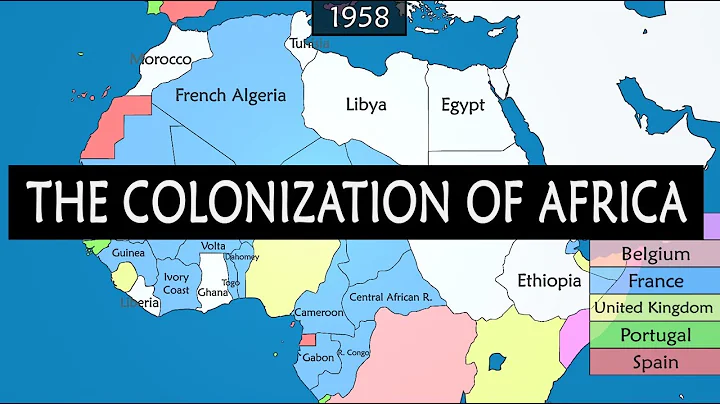

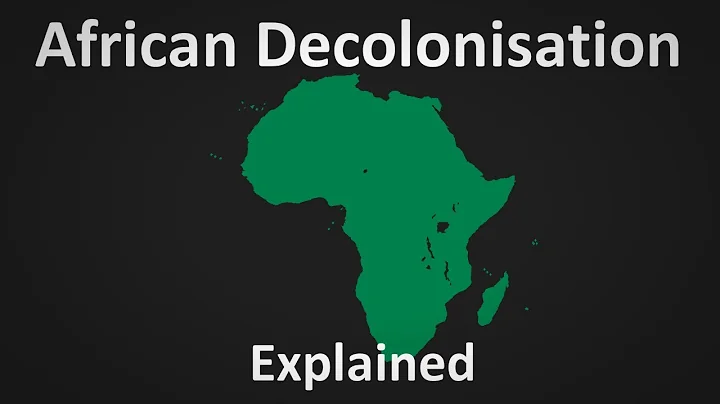
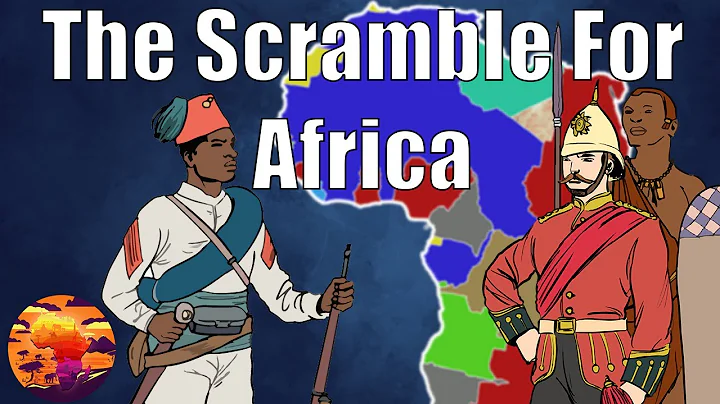

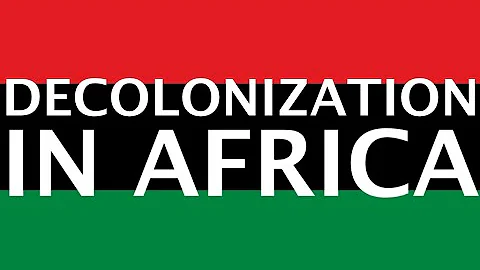

![1. 1125-1153 Before he was twenty-nine years old, he was studying poetry. [Xuanhe seventh year (Huizong 1125), Jingkang (Qinzong 1126-1127), Jianyan (Gaozong 1127-1130), Shaoxing (Gaozong 1131-1153)] Song Xiaozong's eighth year of Qiandao (1172) forty-eight age. - DayDayNews](https://cdn.daydaynews.cc/wp-content/themes/begin/img/loading.gif)


